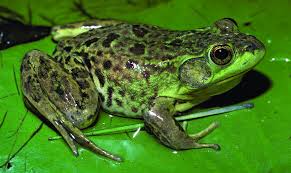Dear Kingdom-minded, Success
Driven Friends and Partners, Welcome to “Naza’s
Corner”, your On-line weekend Platform dedicated to Teens and Kids desirous of becoming everyday
heroes.
“Naza’s Corner”, is a platform to interact with other Teens
and Kids, who are indeed committed to converting Peer Pressure to Peer Learning.
Please, sit back, and savour what
we have in the Animal Kingdom section of the Platform. It is about the FROG.
Enjoy it.
Frogs are amphibians, which comes
from the Greek language and means "both lives." Most frogs are born
in water as tadpoles and gradually change into frogs although some frogs, known
as direct developers, are born as full frogs.
A frog mainly lives on meat that
is insects and small animals like earthworms, minnows and spiders and swallow
their food whole.
There are over 5,000 species of
frogs around the entire world. Unfortunately, about 120 amphibian species,
including frogs, toads and salamanders, have disappeared since 1980.
Historically, one species of amphibian would disappear every 250 years.
Frogs can be found on every
continent in the world except Antarctica. However, the highest concentration of
frogs is found in warmer tropical climes.
They absorb water through their
skin so they don't need to drink.
Frogs can lay as many as 4,000
eggs in frogspawn. The eyes and nose of a frog are on top of its head so it can
breathe and see when most of its body is under the water.
Frogs have long back legs and
webbed feet for jumping and swimming. Certain frogs can jump up to 20 times
their own body length in a single leap.
The world's biggest frog is the goliath frog from Cameroon in West
Africa. Their body can be one-foot long. The smallest frogs in the world
are less than half-an-inch long.
People who study frogs and toads are called herpetologists. Herpetology
is the study of amphibians and reptiles.
Frog bones form a new ring every
year when the frog is hibernating, just like trees do. Scientists can count
these rings to discover the age of the frog.
Because frogs come out in the
rain, people used to think that they fell to earth in the rain! And in
nineteenth century England, people tried catching them to prove it.
Amphibians don't see color - they
only see in black or white.
In recent years, a painkiller
with 200 times the power of morphine has been found in the skin of a frog.
The male Darwins Frog takes its
mate's eggs into its mouth as soon as they show signs of life and they stay
there until they emerge as fully grown froglets.
Frogs cannot live in the sea or
any salt water.
Many of the most brightly colored
tropical frogs are colored in this way to warn predators that they are
poisonous.
Frogs moult. This is the process
where they shed their skin. Most of them moult once a week but some do it every
day. Once the old skin has been pulled off, the frog eats it.
Each frog species has a distinct
croak. They have vocal sacs, which fill with air, and can amplify the sound up
to a mile away!
Frogs are known as indicator
species and can give scientists valuable insight into how an ecosystem is
functioning. Because they are predators and prey many animals are affected by
them, frogs provide insight into the health of the ecosystem.
COPIED
Courtesy Aunty Mercy Chuwang


No comments:
Post a Comment